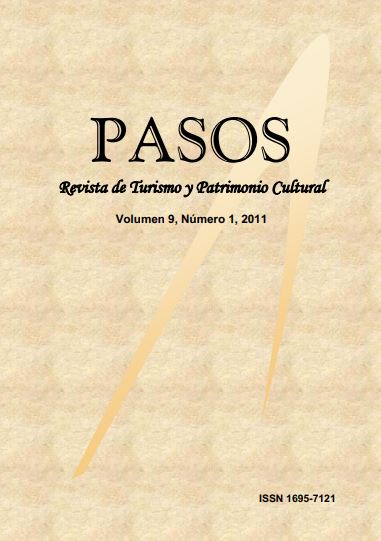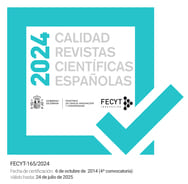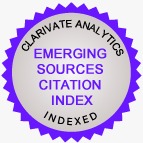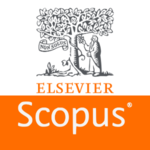The importance of thermal cosmetics for spas and spa tourism: the case of the Autonomous Community of Galicia - Spain
DOI:
https://doi.org/10.25145/j.pasos.2011.09.003Keywords:
Thermal cosmetic, spas, thermal tourism, health tourism, SpainAbstract
This work includes the thermal tourism within the concept of the health tourism and the thermal cosmetic like a new business for the Spanish spas. The primary target is to identify the im- portance of the thermal cosmetic for the Galician spas, besides investigating important aspects of the thermal cosmetic marketing in these centers. A methodology based on an empirical investigation of the descriptive and a qualitative approach was adopted. As instrument of collection of data were used a structured questionnaire, being used the technique of the interview in depth with open and closed questions. The obtained results were that the thermal cosmetic has a great importance in intangible aspects for the Galician spas and were identified these aspects besides identifying other important information related to marketing.
Downloads
Publication Facts
Reviewer profiles N/A
Author statements
- Academic society
- PASOS. Revista de Turismo y Patrimonio Cultural
- Publisher
- Instituto Universitario de Investigación Social y Turismo. Universidad de La Laguna (España) - Instituto Universitario da Maia ISMAI (Portugal)
References
Amor Garroset, Francisco y Fernádez Torán, Miguel Ángel. 1998. “El turismo de salud en la comuni- dad Valenciana”. Revista Valenciana D´estudis Autonòmics, 25: 187-195.
Asociación Nacional de Estaciones Termales / Asociación Nacional De Balnearios. 2006. Información datos del termalismo en España. Mensaje recibida por en 14 jun. 2006.
Artal Tur, Andrés; García Sánchez, Antonio y Ruiz Belijar, José. 2004. “El turismo de salud, características de la demanda: implicaciones y consecuencias para el tejido empre- sarial de la región de Murcia”. En I Jornadas de Economía del Turismo, Mallorca. Disponible en: http:// www.uib.es/congres/jet/pdf/ponencias/ Artal.pdf. Acceso en: 30 may. 2008.
Balnearios de Galicia. 2010. Listado de Balnearios. Disponible en: http://www.balneariosdegalicia. com/balnearios. html. Acceso en 15 nov. 2010.
Bonfada, Marcel H. 2006. “La cosmética termal como factor diferenciador de los balnearios en el turismo de salud: el caso de la Comu- nidad Autónoma de Galicia – España”. Tesina de Maestría presentada en la Universidad de Vigo – España. Ourense.
Bonfada, Marcel H. y Bonfada, Patricia L. B. 2007. “El turismo de salud en España: conceptos y situación actual”. In: IX Seminário Internacional de Turismo, Curitiba.
Brenner, Eliane L. 2005. “El desarrollo turístico de la región de aguas termales de Goiás, Brasil”. Cuadernos de Turismo, Murcia, 16:105-122, jul.-sep.
Fraiz Brea, José A. 2004. “El sector turístico de Ourense”. En Lago Peñas, S. y Vaquero García, A. A economía de Ourense a debate (pp. 49-62). Ourense: Ed. Santiago Lago Peñas.
Goodrich, Jonathan y Goodrich, G.1987. “Healthcare tourism: an explora- tory study”. Tourism Management, Hamilton, 8(3): 217-222.
Grande Herranz, María. T. 2000. “Una visión de conjunto de las esta- ciones termales en España. En Minis- terio del Medio Ambiente, ITGE. Panorama actual de las aguas minerales y minero-medicinales de España” (pp.69-74). En II Jornadas sobre aguas minerales y mineromedicinales. La Toja. Disponible en: http://aguas.igme.es/igme/homec.htm. Acceso en: 20 nov.2006.
Instituto Español de Comercio Exterior (IECX). 2008. “Termalismo y talasoterapia en Francia”. Disponible en: http://www. icex.es/servicios/ documentacion/docu- mentoselaborados/icex/pdfs/franciataasoterm.pdf. Acceso en: 30 jun. 2008.
Lapuente Fernández, Juan. P. y Hernández López, Susana. 2005. “Balneoterapia en estética”. En Pérez Fernández, M. R. Principios de Hidroterapia y Balneoterapia (pp. 337- 350). Madrid: Ed. McGraw- Hill Interamericana.
Melgosa Arcos, Francisco J. 2000. “Turismo de salud: termalismo y bal- neario”. En Blanquer, D. III Congreso Universidad y Empresa. Valencia: Ed. Tirant lo Blach.
Mourão, Mario B. 1997. “A água mineral e as termas: uma história milenar”. São Paulo: ABINAM - Associação Brasileira das Indústrias de Água Mineral.
Pollock, Anna y Williams, Peter. 2000. “Health tourism trends: closing the gap between health care and tourism”. En Gartner, W. (Ed.). Trends in outdoor recreation, leisure and tourism (pp. 165-173). Cambridge, MA, USA: Cabi Publishing.
Rodríguez Míguez, Luis. 2002. “Hidrología médica, balneoterapia y termalismo en el siglo XX”. En Caixa Nova. Evolución de la medicina en el siglo XX (pp. 179-194). Vigo: Caixa Nova.
Rodríguez Míguez, Luis. 2005. “El balneario: tipos de instalaciones balnearias: higiene y seguridad en los balnearios”. En Pérez Fernández, M. R. Principios de hidroterapia y balneoterapia (pp. 35-48). Madrid: Ed. McGraw- Hill Interamericana.
Ross, Kim. 2001. “Health Tourism: an overview”. HSMAI Marketing Review. Disponible en: http://www.hospitalitynet.org/ news/4010521.search?query=%22health+tourism%22. Acceso en: 10 may. 2008.
San José Arango, Carmen. 2003. “Curhoteles: el turismo de salud”. Se- villa: Cajasur, Universidad de Sevilla.
San Pedro Martínez, María. A. 2004. “El turismo de salud”. En AECIT (Asociación Española de expertos científicos en turismo). La actividad turística española en 2003 (pp. 559-574). Castellón: España: Editorial Centro de Estudios Ramón Areces, S. A. Sanchéz Zapata, Almudena. 2006. “Turismo de salud: situación actual y perspectivas de futuro”. Apuntes del master de organización y dirección turística – turismo de salud, Universidad de Vigo, Ourense.
Sayili, Murat; Akca, Hasan; Duman, Teoman; Esengun, Kemal. 2007. “Psoriasis treatment via doctor fishes as part of health tourism: a case study of Kangal Fish Spring, Turkey”. Tourism Management, Hamilton, 28(2): 625-629.
Vogueler Ruíz, Carlos y Hernández Armand, Enrique. 2004. “El mercado turístico: estructura, operaciones y procesos de producción”. Madrid: Centro de Estudios Ramón Areces.
Downloads
Published
How to Cite
Issue
Section
License
I confirm that the work is original (of my/our authorship), and that it will not be submitted to other journals or publications until the final resolution of the review process in PASOS, RTPC.
I authorize the publication of my work by PASOS, PSTN of free and open access in any of the formats that I deem appropriate, for an indefinite period of time and as a non-remunerated collaboration.
Likewise, the author(s) understands that the published work may be linked or deposited on any server or included in other publications (republication), provided that the new place and/or new edition references the original publication and acknowledges the authorship and copyright ownership of PASOS RTPC publications.
Authors understand that a plagiarism-self-plagiarism check will be performed, and the article may be removed at any time from the editorial flow.










